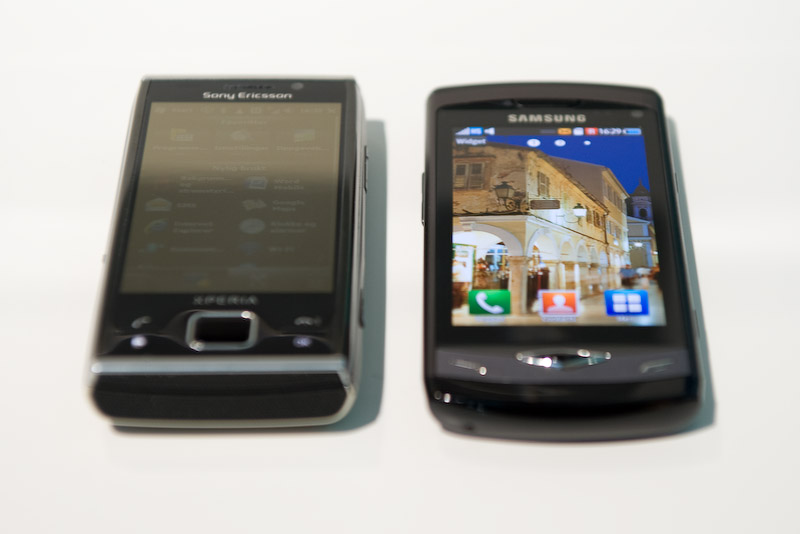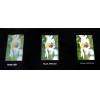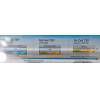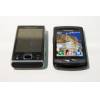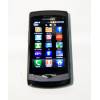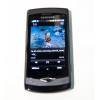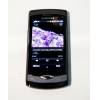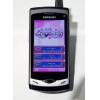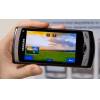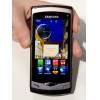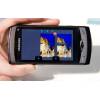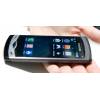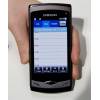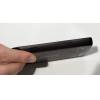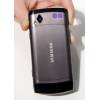 Samsung unveils the Wave, the first mobile phone with Samsung's Super AMOLED display technology - Esato Special17 February 2010 The Samsung Wave is the first mobile phone to have the improved Super AMOLED type implemented. It has a 3.3 inch large display with a 480 x 800 pixels resolution and has something Samsung calls mDNIe (mobile Digital Natural Image engine) technology. The DNIe technology is proven display technology also found in Samsung's LCD TV and LED TV lineups. A little more about the Super AMOLED display. It is currently only available on the Wave. But more models released later this year will have this type of display implemented. Samsung said this type of display could be available for larger displays like TV or PC monitors and that it is not a technical issue, but are depending on demand from consumers. AMOLED displays are better than traditional displays because less glass are between the light source and the viewer. Super AMOLED requires even less glass and in return the viewing angle is better as the transmittance improves. TSP: Touch Screen Panel The power consumption decreses as it requires at least 10% less power than regular displays. I haven't been able to see the Wave in direct sunlight myself, but was told by those who had that the visibility was excellent. I did have the opportunity to compare the Wave with mobile phones without the Super AMOLED display and there is absolutely no doubt that Super AMOLED is another step in having a crystal clear display. The viewing angle is excellent. Take a look at the Sony Ericsson Xperia X2 and the Samsung Wave in the photo below. The X2 backlight is set to full light. The Samsung Wave is runing on the new mobile platform Bada. On top of that we find an improved TouchWiz user interface. The TouchWiz 3.0 UI makes it easy for the user to change the layout of the homepage and add widgets. Twitter, Facebook and several other social network services can be added. In the photo below, the Xperia X2 backlight is set on full. The same thing on the Wave display to the right
In addition to the Wave, Samsung also announced the open mobile platform, Samsung Bada. The Bada platform was announced in December 2009 and until this date, more than 150 companies has developed applications for the platform. These are Expect this number to be multiplied when the Wave is available in stores. The time of release could not be confirmed. I spoke to several of the application developers which had applications ready for demonstration. Most of them already had their applications available for other platform and it could therefore easily be ported to the Bada platform. Depending on the complexity of the application, the time used for this porting varied from 3-4 weeks (early alpha of a language translation app) to proximately 2 months for a Flash based football game. The Bada platform includes UI tools includes the ability to embed Adobe Flash Player and the WebKit Internet browser directly native Bada applications. In contrast to other platforms, developing applications for the Bada platform is free ($ 1.0) and the applications will be made available to Samsung mobile phone owners via the Samsung app store. Samsung Wave Technical specifications
Comments On 20 Feb 20:45 Prom1 wrote 802.11 N spec?! Sweet ... first phone to actually have this! Well done Samsung.
This article is closed for new comments. |







